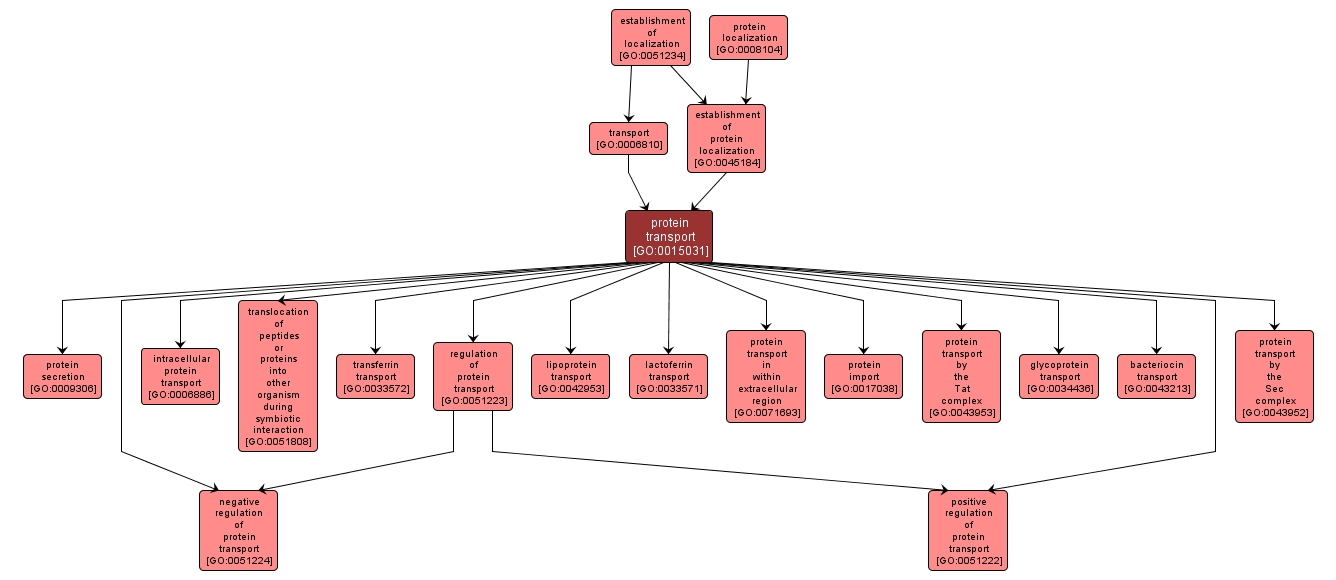GO TERM SUMMARY
|
| Name: |
protein transport |
| Acc: |
GO:0015031 |
| Aspect: |
Biological Process |
| Desc: |
The directed movement of proteins into, out of, within or between cells by means of some external agent such as a transporter or pore. |
Synonyms:
- enzyme transport
- GO:0015831
|
|

|
INTERACTIVE GO GRAPH
|














